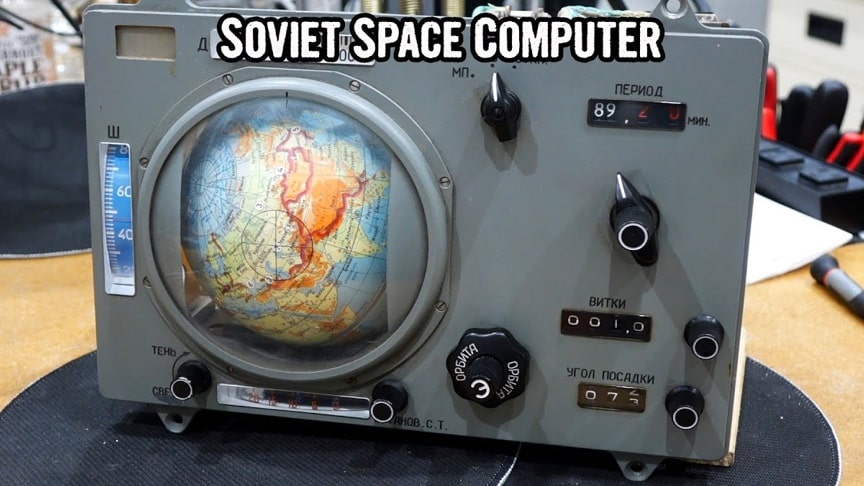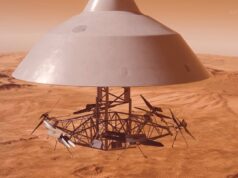Globus IMP instruments were spacecraft navigation instruments used in Soviet crewed spacecraft. The IMP acronym stems from the Russian expression Indicator of position in flight, but the instrument is informally referred to as the Globus. It displays the nadir of the spacecraft on a rotating terrestrial globe.
source/image: CuriousMarc
It functions as an onboard, autonomous indicator of the spacecraft’s location relative to Earth coordinates.An electro-mechanical device in the tradition of complex post-World War II clocks such as master clocks, the Globus IMP instrument incorporates hundreds of mechanical components common to horology. We open up a Soyuz INK “Globus” analog mechanical navigation computer. It’s full of gears and incredibly gorgeous, and in our case, somewhat broken. Thanks to Depstech for lending us their endoscope! Watch the video from CuriousMarc:
This instrument is a mechanical computer for navigation akin to the Norden bombsight. It mechanically computes complex functions and displays its output through mechanical displacements of the globe and other indicator components. It also modulates electric signals from other instruments.Designed to be integrated into a niche in the instrument display panel, the IMP instrument’s volume was about that of a big toaster [Width: 24.8 cm(9+3⁄4 in), H:22.2 cm (8+3⁄4 in), D:14.6 cm(5+3⁄4 in).
Advertisement
Displays:A terrestrial globe, with a diameter of 12.7 cm (5 inches),which approximate a 1:100,000,000 scale, moving in two degrees of freedom (rotation and inclination);Two disc-shaped indicators, one each for longitude and latitude, with markings in degrees on their edges;An orbit counter labelled ЧИСЛО ВИТКОВ (Number of revolutions) with three digits: two white digits for orbits and one red digit for fraction of an orbit;A backlit indicator below the globe that, when illuminated, displayed the text МЕСТО ПОСАДКИ (Landing Place).











